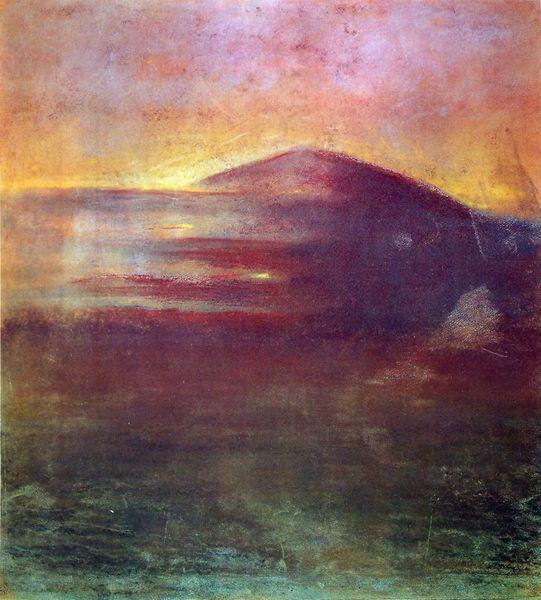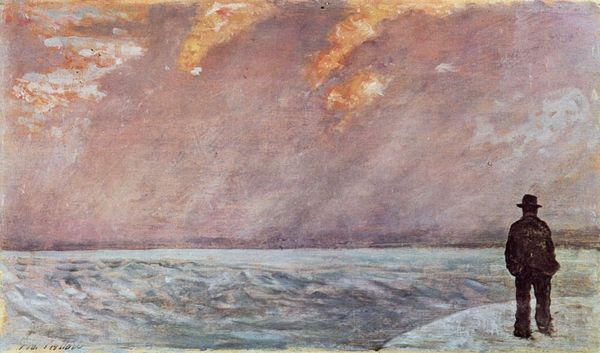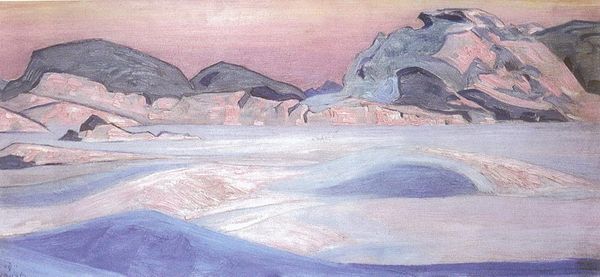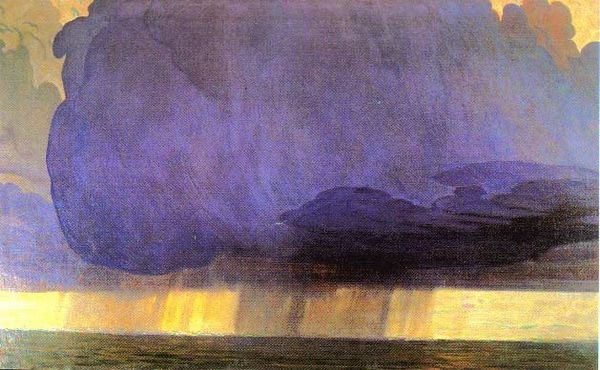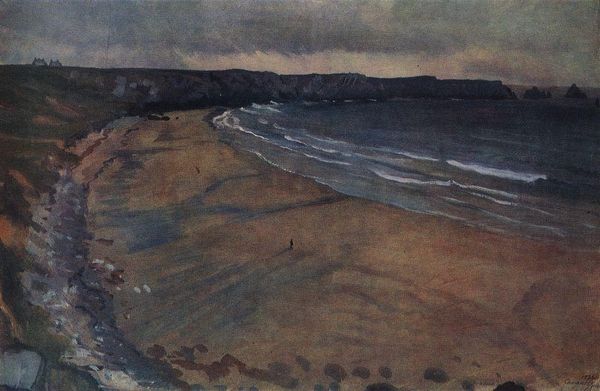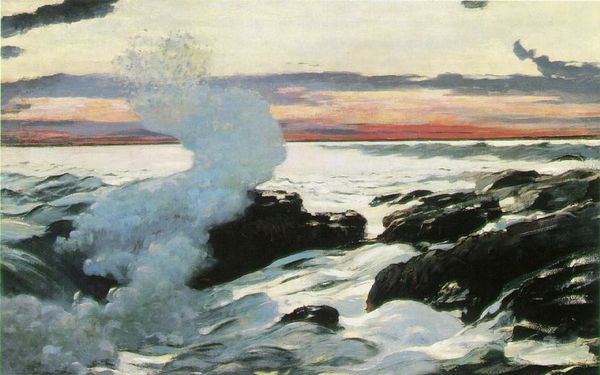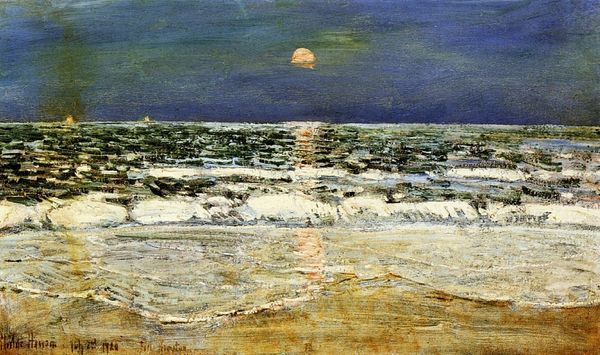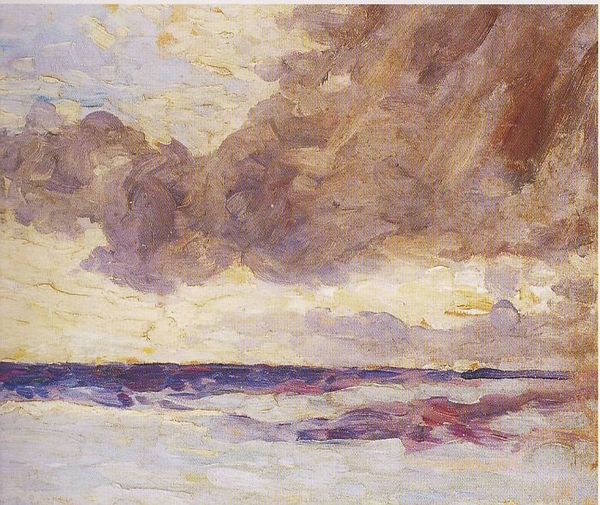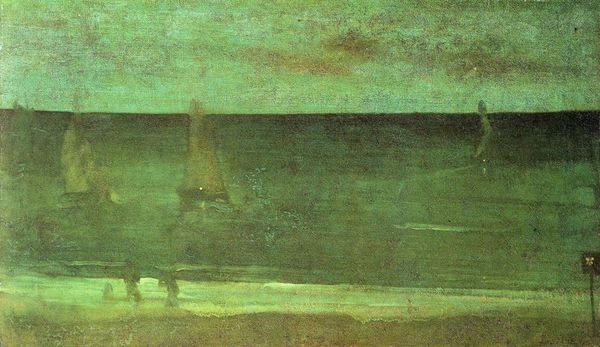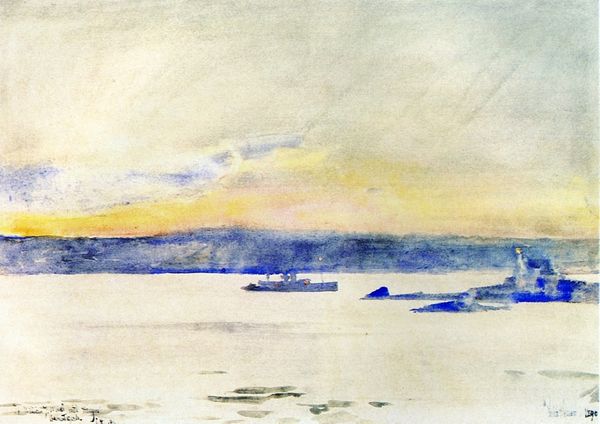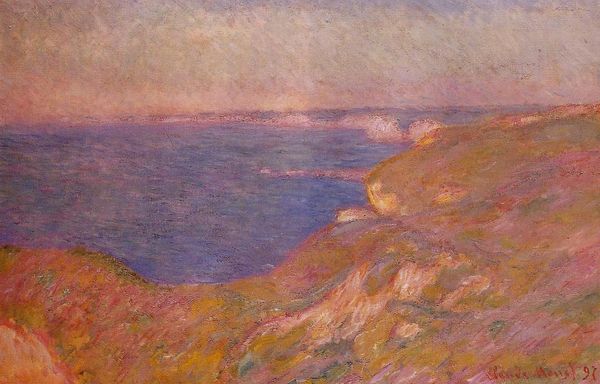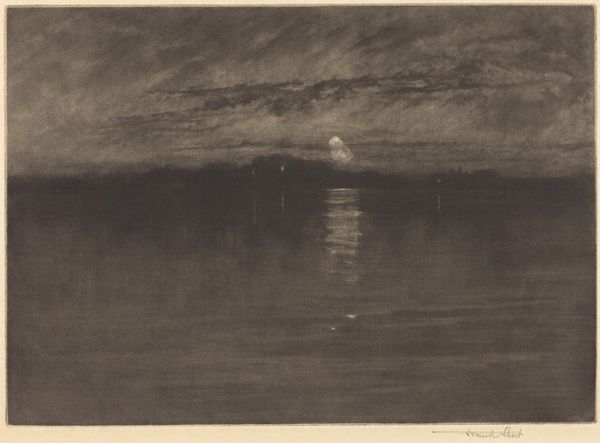
Copyright: Public domain
Editor: This is Konstantin Korovin's "Arctic Ocean" from 1913, rendered in oil paint. I'm struck by how muted the colors are, yet it still evokes a sense of vastness and, dare I say, melancholy. What stands out to you in this piece? Curator: The painting operates as more than just a landscape; it's a statement about humanity's relationship with the natural world and specifically with the Arctic. Remember that 1913 was a time of both great exploration and growing anxieties about environmental impact linked to industrial expansion. Korovin, situated in Russia which then, as now, had a powerful northern border region, seems to be portraying the Arctic as both sublime and vulnerable. The lack of distinct human presence makes me think about power dynamics. Whose gaze is privileged here, and who or what is rendered invisible? Editor: So, the muted tones and lack of human figures might suggest a critique of imperial ambition or resource extraction in the Arctic region at the time? Curator: Precisely! And consider how the Impressionistic style, typically used for pleasant landscapes, is employed here for something altogether more somber. The atmospheric-phenomenon almost smothers what could be pretty. Is he romanticizing, or sounding a warning? Perhaps both. It begs us to consider the tension between the romantic allure of untouched landscapes and the colonial impulses that threaten them. How does the work invite dialogue around the changing face of the earth and its implications for identity and social structures? Editor: That's a powerful perspective. I initially saw it as just a pretty seascape, but now I realize how much deeper its meaning might be embedded in the historical and political context. Thanks! Curator: Art often functions on multiple levels, both aesthetic and political. I am hopeful our discussion helped broaden our understanding of the layers it carries.

